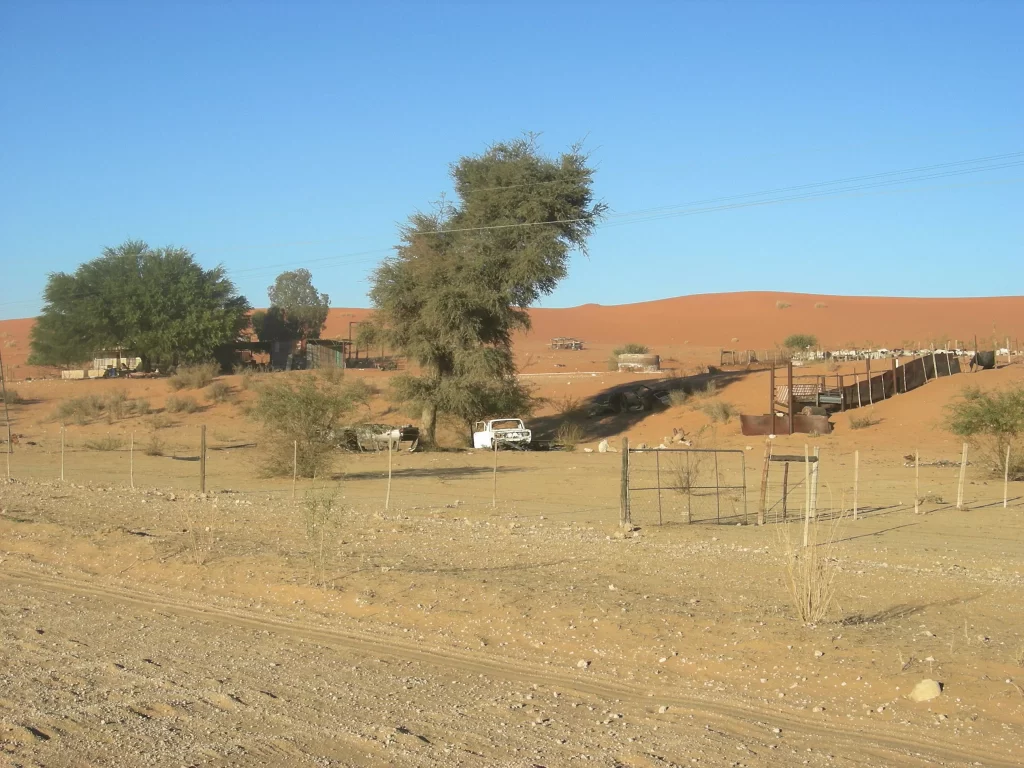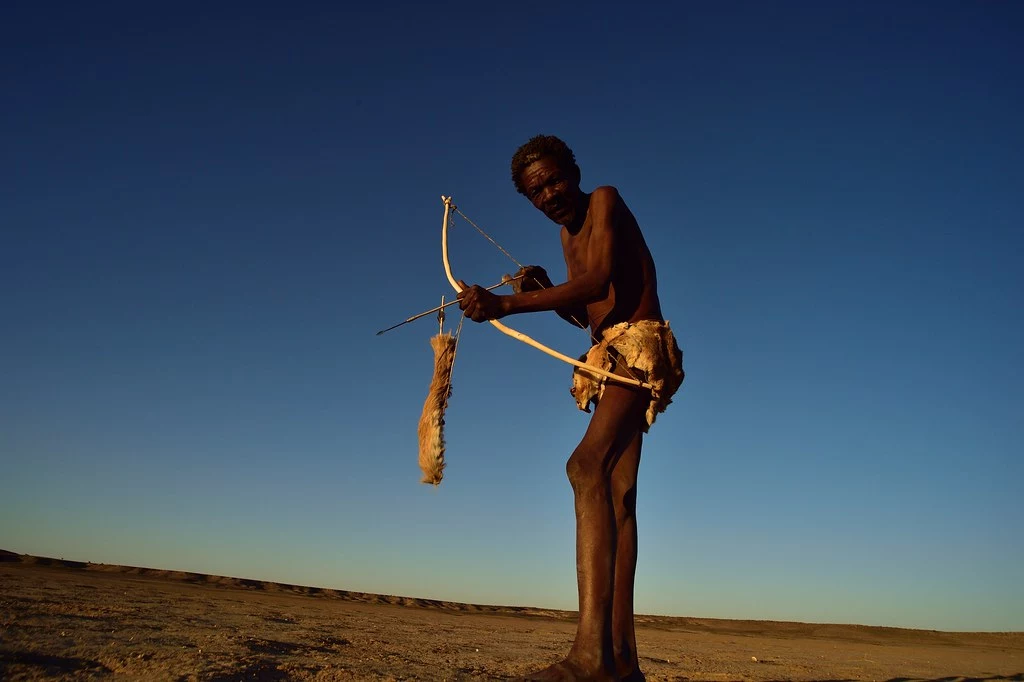The Kalahari desert is one of the known deserts that have ever existed. A desert simply means an area of land covered by barren soil which has a sparse distribution of vegetation cover. The inability of the land to be productive is caused mainly by the rugged climatic condition.
Many people ask if there are people who still live in the desert despite the hard conditions. The answer is simple, the Kalahari desert has inhabitants who survive in it. You may wonder how these people get to make a living in such a place. Kalahari desert is mostly inhabited by the Bantu-speaking groups which include the Herero, the Tswana and the Kgalagadi. They live in hamlets of approximately 6,000 people per square kilometer.
The people living in the Kalahari desert survive the harsh climatic conditions by planting drought-resistant crops. They also dig boreholes and use oases to acquire water for drinking, general body hygiene and for their livestock herds that they rear. Furthermore, they acquire their food from animals which provide meat and also harvest from their drought-resistant crops such as sorghum and maize, commonly known as corn, and many more other methods.
Although the Kalahari desert may look deserted with no population because it is a desert, people still live there and make a living there.

Who Lives In The Kalahari Desert?
The outlook of the Kalahari desert may give an impression to an individual that no people live in this place. However, this statement is disregarded because a good number of people live here and make their living from the place. Despite the Kalahari desert being covered by barren soil, especially sand soil, people still cultivate but use drought-resistant crops to avoid losses.
The people who live in Kalahari desert are mainly the Bantu-speaking groups, majorly the Tswana, Herero and the Kgalagadi. Their migration into the desert from their original homeland was due to various factors such as population pressure in their homeland, epidemics, drought and famine, internal community conflicts, external attacks, search for food and pastures for their livestock and a spirit of adventure just to mention many more other reasons. The Bantu-speaking groups that live in the Kalahari desert include the Tswana, the Herero and the Kgalagadi and live in villages with their houses being of simple structures.
The Kalahari desert is not only inhabited by the Bantus but also some Europeans. The history of how these Europeans managed to get to Kalahari dates back to the 19th century. Many of these Europeans were traders, travelers and missionaries and some ended up creating settlements in the Kalahari desert. Later on, they migrated to other places leaving a small portion of their population inhabiting parts of the Kalahari desert and being government officials and employees.
They are also known for ownership of large pieces of land in the Kalahari desert. The distance covered by the desert is approximately 930,000 square kilometers and covers several countries including South Africa, Namibia and Botswana.
Do The Bushmen of The Kalahari Still Exist?
The Bushmen are one of the earliest inhabitants of the Kalahari desert. They also may be referred to as the San or the Kwe. One of the cultural aspects that differentiate the San, one of the members of the Khoisan, is their language. They have a unique language characterized by the use of click sounds to pass information from one person to another. In addition, one of their main economic activities is that they are hunters and gatherers and they live in shelters made of rock and thatched with grass on their roofs, living in villages of up to 81,000 members.
The Bushmen in Kalahari still exist but in small numbers, because most of them already moved from the Kalahari desert to settle in other places that are more advanced. The existence of the Central Kalahari Game Reserve in Botswana is a major reason why the Bushmen moved due to clashes with the government, that there was a need to preserve the reserve mainly for wildlife conservation and therefore the people moved to avoid any unnecessary clashes with the government. There has also existed a conflict between the government and the people due to claims that the government has been constantly ignoring their requests and petitions.
There are different kinds of tactics that these Bushmen use to survive and to make their daily living. For them to acquire adequate water supply, they dig boreholes for water although the government discouraged them from boring any more boreholes and even denied them access to water in some of the reserves at some of the times. The day-to-day living of the Bushmen in Kalahari has continued to be tough for them due to major issues of drought, famine and unemployment.

How Do Humans Survive In The Kalahari?
The Kalahari desert has a population of about 90,000 people spread out through South Africa, Botswana and Namibia. Since it is a desert and it experiences extremely harsh climatic conditions, farming in such a place might be a challenge to undertake despite having drought-resistant crops. Due to this reason, therefore, the people inhabiting this place have to look for elaborate methods for them to adequately survive in such a region.
There are many tactics that the humans living in the Kalahari desert use for them to survive. They get water by drilling their boreholes for an adequate water supply. The water can also be found in oases. These are depressions found mainly in deserts where water can be found. Food for them is acquired through hunting and gathering. Hunting is majorly a group activity because it is easier to hunt as a group for an easier catch than hunting as an individual. They also feed on edible plants and gather fruits, an activity that is conducted by the men. There are also various means of transport in the Kalahari desert including the use of horses, donkeys and camels. Camels are the most ideal means of transport because they can survive without food and water for a long period. However, their disadvantage is that they are a slow means of transport.
Without the above methods of survival, it would have been difficult for people to survive in the Kalahari desert. They would have otherwise passed away due to various reasons like malnutrition and drought and famine.
